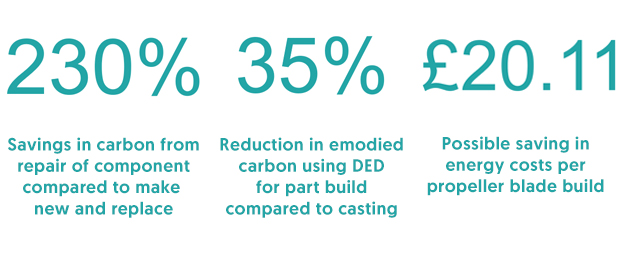
The MTC demonstrated the use of DED for both complex component builds and part repairs through this propeller blade case study. The technologies were assessed on their environmental impact benchmarked against traditional manufacturing methods
Current casting methods for propeller blade manufacturing generate large amounts of waste. A near net shape DED manufacturing process has the potential to therefore reduce the environmental impact during the manufacturing phase.
Alongside the challenge of building these components, propeller blades are highly susceptible to corrosion in service, limiting their use life to an average of 5 years. DED offers a viable repair mechanism for these parts, providing a means to increase this lifespan, thus reducing the demand for virgin components. However, analysis is required to understand the ‘in process’ environmental impact of this repair method compared to the potential benefits of life extension.
